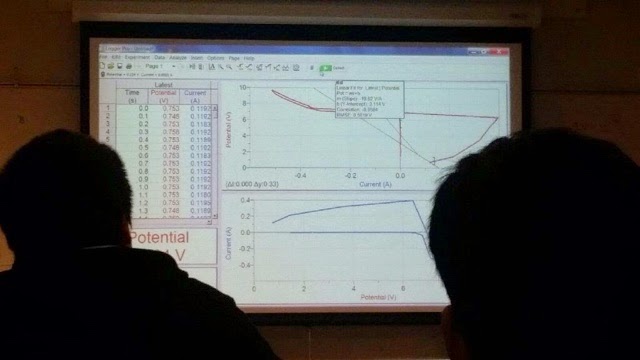Question:
What is the simplest way to describe energy?
Answer:
It is the capacity to do work.
Question:
Why do you need a wire to go back from the bulb to the battery?
Answer:
The electrons can flow in and out of the battery causing an equilibrium charge.
Question:Suppose there is a hammock maker. What are the 2 things need to know about waterfall?
1. Height, which related to the potential energy/pressure
2. Rate of flow
Similarly, we use hammock maker to understand electricity generator.
Voltage is the height of the electrical cliff.
Height is the voltage(energy/unit charge), flow rate is the current(charge per second),power is the energy per unit time
We are introduced to the P=VI (power=voltage*current)
Then we use this to solve a problem, which is given current and voltage calculate the power of the closed circuit.
Ammeter is a machine used to measure current. It is old-fashioned, but very efficient.
Our purpose is to measure both currents in wire on top and bottom of the bulb, and compare them.
By "top" and "bottom" we mean that placing the ammeter firstly between the +pole of the bulb, and secondly between light bulb and the -pole of the battery
Over a wide range of conditions, the flow of the charges quickly achieves a steady state value and remains constant. The "average speed" at which the "free" charges are moving in the wire is called the drift velocity vd.
Given area,I ,density . We want to know the drift speed.
Next, we are going to measure resistor using Ammeter and Volt meter.
Graph the relationship on logger pro, we find some of the resistors follow Ohm's law, while some are not. Some of the graph are linear relationship, some are not. Why?
Prof Mason says it is because 1,the light ball turns on 2, material change, (non-Ohmic material)3. material dependent as voltage increases 4. temperature. etc.
**What does resistance depend on**
Lenghth :160cm and 200cm nickle. How should the R compare? The longer the material, the bigger the resistance. We conclude that resistance is proportional to length. We use similar methods to find that resistance is inversely proportional to the cross section area of the wire.
Temperature increasing causes more collision stuff move crazily which makes electrons hard to pass through. Thus, as T increases, R increases. R is also dependent on resistivity of material. Say like, copper is more conductive than nickle.












No comments:
Post a Comment